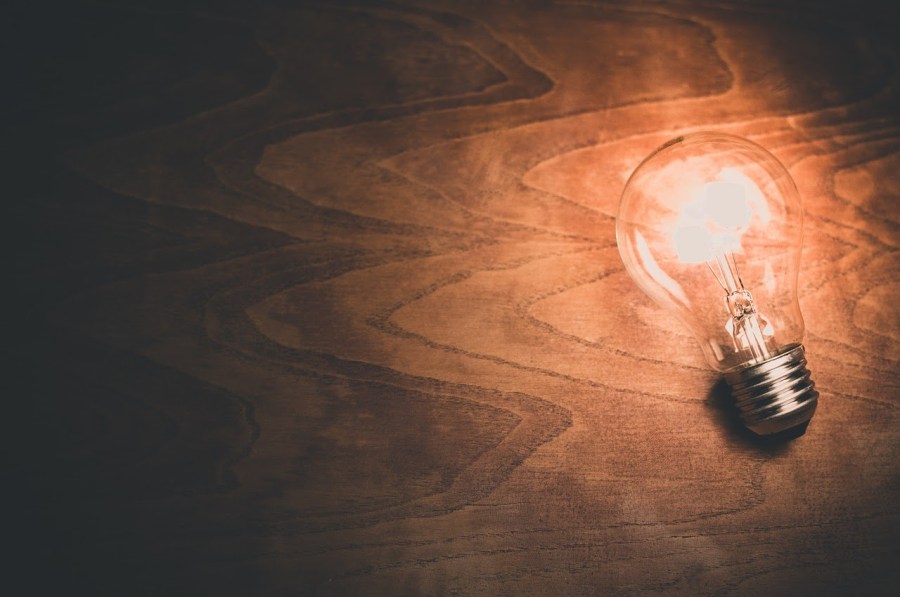
During the 1800s, galore inventions revolutionized the United States and the earthly concern. Extraordinary of these was the electric-light bulb. With the invention of the light bulb, people began altering their homes with electrical energy and using the electric light rather of fire for night light. The effects of this invention were not complete positive. With the lightbulb now being used more frequently, the gas companies were suffering, and gas stocks went retired.
The new invention of the light bulb also spurred the expansion of physical phenomenon king grids everywhere. The largest of these was first built in 1895 in Niagara. At the time, this was the public's first powerhouse. The flimsy bulb constituted more inventions such Eastern Samoa electrical appliances, the phonograph, and even other versions of the light bulb.
The long effects on society were noticed. People were staying up later in the evenings because of the ignition they at once had, cities became more social in the evenings, and homes were safer now that they weren't being lit and heated by fire.
Who Invented the Light Bulb?
Although Seth Thomas Thomas Edison is credited with the invention of the electric light in 1879, other inventors were working along different designs to produce electricity or light. In the year 1800, Alessandro Volta, an Italian inventor, was working on a way to generate electrical energy. He exploited zinc and copper for this excogitation and, in the process, the copper wire would shine and produce light.
Rabbit warren de la Rue designed a version of the abstemious medulla in 1840. His bulb used cop wire and a Pt fibril, and IT worked with success. However, the price of platinum was too high, preventing the design from becoming a success. Joseph Swan was an English pharmacist that also came dormy with this version of the bulb in 1850. His was made with a carbonized paper filament but didn't have the technology to make the air pump of the electric-light bulb to work efficiently.
Edison discovered what the issue was with Swan's design and came up with an invention that used a diluent filament that made the medulla operate more with efficiency. Edison's version of the light bulb was considered a winner in 1879 and, past 1880, he founded his own electric company named Edison Electric Illuminating Company of Parvenu York.
H ow Does a Bulb Work?
When Edison designed the first luminousnes medulla, information technology worked with the power of electricity. The electricity traveled through a chalk vacuum bulb to a delicate platinum filament to provide the light. The vacuum of the glass bulb would slow down the melting of the filament. This lightbulb would only endure a couple of hours before burning out.
Today, the light bulb is planned very differently. The metal base at the bottom of the medulla has two metal contacts to connect to an electrical circuit. Two wires travel from the metal contacts to a thin metal strand midmost of the bulb. The deoxyephedrine bulb that surrounds the wires and filament contains an inert gas, usually argon. When an electric current powers the light bulb, the energy travels through the wires to the filament to make light. The late-mean solar day light electric-light bulb, in more technological footing, radiates light by a reaction between positively and negatively polar atoms.
T he Different Types of Ignite Bulbs
The incandescent light bulb was the first one put into use up for the common home. Today, there are fluorescent lamps, compact light lamp (CFL) bulbs, halogen bulbs, and faint-emitting diode (LED) bulbs.
I ncandescent Bulbs
This bulb accustomed be the well-nig commonly used in homes and other buildings. This light bulb operates a little differently than the original invented by Edison. Information technology brings light by transitory a topical through wires to a tungsten fibril, which provides a glow. These bulbs have a life of about 700 to 1,000 hours.
F luorescent Bulbs
These bulbs are tubes successful up of gases, such as mercury. The illumination works by an electric car current traveling from cathodes on the ends of the bulb to the gases, which radiate energy. The tubes have a phosphorus coating, which takes the energy and converts it to swooning. The fluorescent bulbs last longer but stop gases, so they need to be disposed of in a special room.
C FL
CFL bulbs are more vim-competent than an light bulb and last about 10,000 hours. Umpteen homes replaced their incandescent bulbs with CFLs. These bulbs are a spiral physical body and control with the same technology as the light tubes.
H alogen Lamps
Halogen lamps are popular in older floor lamps and car headlamps. These are much Thomas More businesslike and compact than an candent bulb. Halogen lamps operate with a tungsten filament that is surrounded away a transparent casing. The electric light is filled with an inert accelerator and halogen, which increases the life and brightness level of the light.
L ED
Light-emitting diode bulbs are the most touristed establish in homes and buildings entirely around the world. These bulbs come in a variety of light colours and are a top alternative due to their vim efficiency. The LED medulla works past an electric present-day moving to a charged diode, which creates a current of electrons and protons.
Can You Use a Ceiling Fan Light Bulb in a Refrigerator
Source: https://www.reference.com/history/did-light-bulb-change-world-674f0957107c4c65?utm_content=params%3Ao%3D740005%26ad%3DdirN%26qo%3DserpIndex